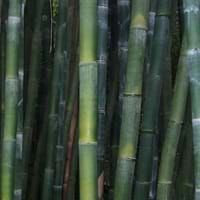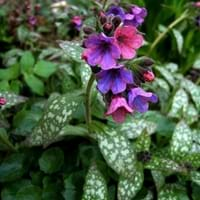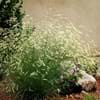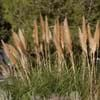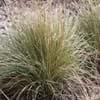Life Span
Perennial
Perennial
Origin
China
Southern Europe
Types
Greenstripe Vivax, Moso, Weavers Bamboo, Oldhamii
Bigleaf hydrangea, Hortensia, Smooth hydrangea, Oakleaf hydrangea, Annabelle
Habitat
Subtropical climates, Wet Woods
Forest edges, Hillside, Woods
USDA Hardiness Zone
8-11
4-8
Sunset Zone
H1, H2, 8, 9, 14, 15, 16, 17, 18, 19, 20, 21, 22, 23, 24
1a, 1b, 2a, 2b, 3a, 3b, 4, 5, 6, 7, 8, 9, 14, 15, 16, 17
Habit
Upright/Erect
Cushion/Mound-forming
Flower Color
Not Available
White, Red, Pink, Violet
Flower Color Modifier
Bicolor
Bicolor
Fruit Color
Not Available
Brown
Leaf Color in Spring
Dark Green
White, Green, Silver
Leaf Color in Summer
Light Green
White, Green, Silver
Leaf Color in Fall
Dark Green
White, Green, Silver
Leaf Color in Winter
Dark Green
Light Green
Leaf Shape
Acicular
Oblovate
Plant Season
Spring, Summer, Fall, Winter
Spring, Summer, Fall
Sunlight
Full Sun, Partial Sun
Partial Sun, Partial shade, Full Shade
Type of Soil
Clay, Loam, Sand
Clay, Loam
The pH of Soil
Acidic, Neutral, Alkaline
Acidic, Neutral, Alkaline
Soil Drainage
Average
Average
Bloom Time
Not Available
Early Spring, Spring, Late Winter
Tolerances
Drought
Drought
Where to Plant?
Container, Ground
Container, Ground
How to Plant?
Grafting, Seedlings, Stem Planting, Transplanting
Seedlings, Stem Planting
Plant Maintenance
Medium
Medium
Watering Requirements
Needs watering once a week, Use Mulches to help prevent water loss during hot and windy weather, Water Deeply
Not Available
In Summer
Lots of watering
Average Water
In Spring
Moderate
Moderate
In Winter
Average Water
Average Water
Soil pH
Acidic, Neutral, Alkaline
Acidic, Neutral, Alkaline
Soil Type
Clay, Loam, Sand
Clay, Loam
Soil Drainage Capacity
Average
Average
Sun Exposure
Full Sun, Partial Sun
Partial Sun, Partial shade, Full Shade
Pruning
Do not prune during shooting season, Prune in late summer or fall, Remove damaged leaves
Remove damaged leaves, Remove dead branches, Remove dead leaves
Fertilizers
All-Purpose Liquid Fertilizer
All-Purpose Liquid Fertilizer
Pests and Diseases
Black sooty mold, Mealybugs, Mosaic viruses, Powdery mildew, pythogens, Stem rot
Red blotch
Plant Tolerance
Drought
Drought
Flower Petal Number
Single
Single
Foliage Texture
Coarse
Medium
Foliage Sheen
Matte
Matte
Evergreen
No
Semi-Evergreen
Attracts
Deers, Rabbits, Rats, Squirrels
Hummingbirds
Allergy
allergic conjunctivitis, Asthma, Inflammation, Throat itching
Chest tightness, Diarrhea, Dizziness, Nausea, Vomiting
Aesthetic Uses
Showy Purposes
Not Available
Beauty Benefits
Not Available
Not Available
Edible Uses
Yes
Not Available
Environmental Uses
Agroforestry, Air purification, No fertilizer, pesticides, or herbicides needed
Air purification
Medicinal Uses
Clears heat, Cold, fidgeting, Treating fever, Urinary tract problems
Fever, Kidney problems, Urinary tract problems
Part of Plant Used
Leaves, Stem
Flowers, Root
Other Uses
Application in Handicrafts, Showy Purposes, Used As Food, Used in Furniture, Used in paper industry
Not Available
Used As Indoor Plant
No
Not Available
Used As Outdoor Plant
Yes
Yes
Garden Design
Feature Plant, Screening / Wind Break, Tropical
Bedding Plant, Edging, Groundcover, Mixed Border, Wildflower
Botanical Name
BAMBUSA oldhamii
PULMONARIA saccharata
Common Name
Clumping Bamboo, Giant Timber Bamboo, Oldham's Bamboo
Bethlehem Sage
In German
Bambus
Hortensie
In French
Bambou
Hortensia
In Spanish
Bambú
Hortensia
In Greek
μπαμπού
υδραγεία
In Portuguese
bambu
Hortênsia
In Polish
Bambus
Hortensja
Phylum
Magnoliophyta
Not Available
Class
Liliopsida
Not Available
Order
Poales
Not Available
Family
Poaceae
Boraginaceae
Genus
Bambusa
Not Available
Clade
Not Available
Not Available
Tribe
Bambuseae
Not Available
Subfamily
Not Available
Not Available
Number of Species
Not Available
Not Available
Importance of Giant Timber Bamboo and Bethlehem Sage
Want to have the most appropriate plant for your garden? You might want to know the importance of Giant Timber Bamboo and Bethlehem Sage. Basically, these two plants vary in many aspects. Compare Giant Timber Bamboo and Bethlehem Sage as they differ in many characteristics such as their life, care, benefits, facts, etc. Every gardener must at least have the slightest clue about the plants he wants to plant in his garden. Compare their benefits, which differ in many ways like facts and uses. The medicinal use of Giant Timber Bamboo is Clears heat, Cold, fidgeting, Treating fever and Urinary tract problems whereas of Bethlehem Sage is Fever, Kidney problems and Urinary tract problems. Giant Timber Bamboo has beauty benefits as follows: Not Available while Bethlehem Sage has beauty benefits as follows: Not Available.
Compare Facts of Giant Timber Bamboo vs Bethlehem Sage
How to choose the best garden plant for your garden depending upon its facts? Here garden plant comparison will help you to solve this query. Compare the facts of Giant Timber Bamboo vs Bethlehem Sage and know which one to choose. As garden plants have benefits and other uses, allergy is also a major drawback of plants for some people. Allergic reactions of Giant Timber Bamboo are allergic conjunctivitis, Asthma, Inflammation and Throat itching whereas of Bethlehem Sage have Chest tightness, Diarrhea, Dizziness, Nausea and Vomiting respectively. Having a fruit bearing plant in your garden can be a plus point of your garden. Giant Timber Bamboo has no showy fruits and Bethlehem Sage has no showy fruits. Also Giant Timber Bamboo is not flowering and Bethlehem Sage is not flowering . You can compare Giant Timber Bamboo and Bethlehem Sage facts and facts of other plants too.
